The
Ignis is Maruti's latest entrant in the crowded hatchback space. This is a premium offering and will be sold through the Nexa dealership network. The marketing talk in the preview event clearly indicated that Maruti is touting the Ignis as car for the "millennials" i.e. people born after 1980, who are buying their first car. For the Ignis, right from the product (personalisation options) to booking (online mode) to the marketing plan - everything will be targeted at the millennials.

The Ignis will be powered by the most popular engine options from Maruti - the 1.2L K-series petrol unit (83 BHP / 115 Nm) and the 1.3L DDiS 190 diesel engine (74 BHP / 190 Nm).
Maruti has obviously sensed the greater acceptance of the automatic transmission in India and hence, the Ignis will be offered in AMT variants for both the petrol and diesel engines - a segment first. Answering a specific query on whether this Nexa offering should have had a regular automatic transmission, Maruti clarified that a regular automatic transmission was never considered, since its research indicated the customers wanted the functionality of an automatic and were not too concerned about the technology that delivered it, especially in this segment. The incremental cost of an AMT, which is substantially lower than that of a conventional automatic transmission, was also a deciding factor. Maruti wants people to spend more on customisations than on the auto transmission.
ABS and dual airbags will be standard across the range. The Ignis will be homologated and certified for the future front offset, side & rear impact and pedestrian safety regulations, well before the October 2017 deadline. The compliance and certification for these tests has been done at Maruti's own R&D facilities and crash test labs in Rohtak, because the government facilities are not yet ready. Seatbelts with pre-tensioners / force limiter and ISOFIX child seat mounts with be provided as well.
Maruti does expect some cannibalisation of the Swift and Baleno, but are clear that they thought that the Swift is for the conservative buyer and the Baleno is for someone who wants luxury. The Ignis will be bought by a more adventurous buyer. It is expected to be priced in the Swift – KUV100 bracket. The e-bookings for the car will start in the first week of January 2017 and the car will be launched in an EDM music concert ( by Axwell) on 13th January.
Coming to the Ignis variant that was on display, the front of the car looks good and is dominated by the aggressive headlights that are integrated with the mesh grill:

Please note a couple of firsts for Maruti here:
• LED Daylight Running Lamps
• LED Projector Headlamps
The fog lamps are housed inside a chrome perimeter. In fact the amount of chrome throughout looks optimum. Of course we will need to see in a person a lower variant with presumably lesser chrome for a fair comparison:

The side view of the car is defined by beefed up wheel arches and with what Maruti calls "3D trapezoidal 5-spoke alloy wheels", finished in glossy black. Fancy names aside, they do look fabulous on the car. Thankfully, gone are the days of the horrid alloy designs that Nexa gave on the S-Cross. The side cladding, though not too wide, does add to the car's masculinity:


Tyres are Bridgestone 175/65 R15 units:
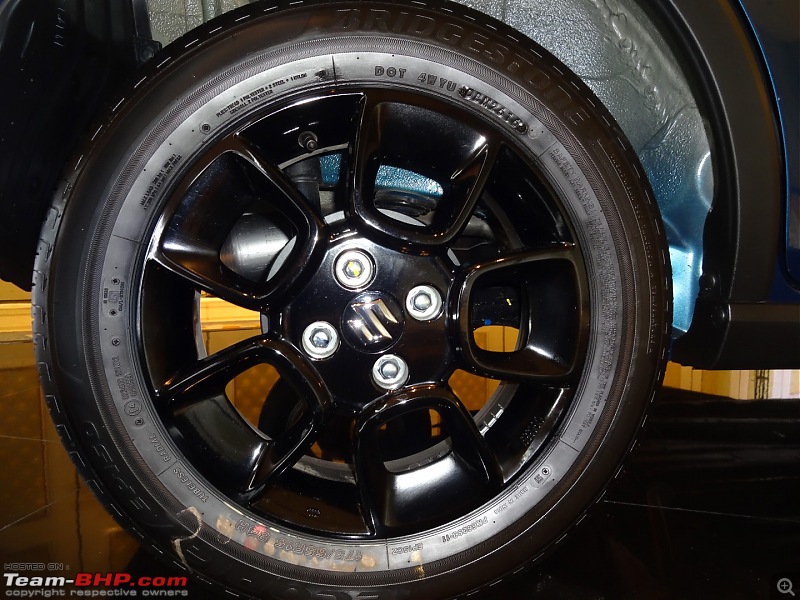
The spare wheel is not an alloy:

No, this is not an Adidas logo on the C-pillar. Maruti calls it the "Suzuki Progressive Triad". It is present on both the C-pillars as well as the center console that holds the gear lever:

To increase the trendiness of the car, Maruti is banking heavily on the options for exterior styling with dual-tone colour themes - black roof, white roof, roof wraps, etc. There will be stickers available for the fog lamp bezels and a lot of upholstery design options for the interiors.
Rear styling is nothing to write home about, but it's not bad either:
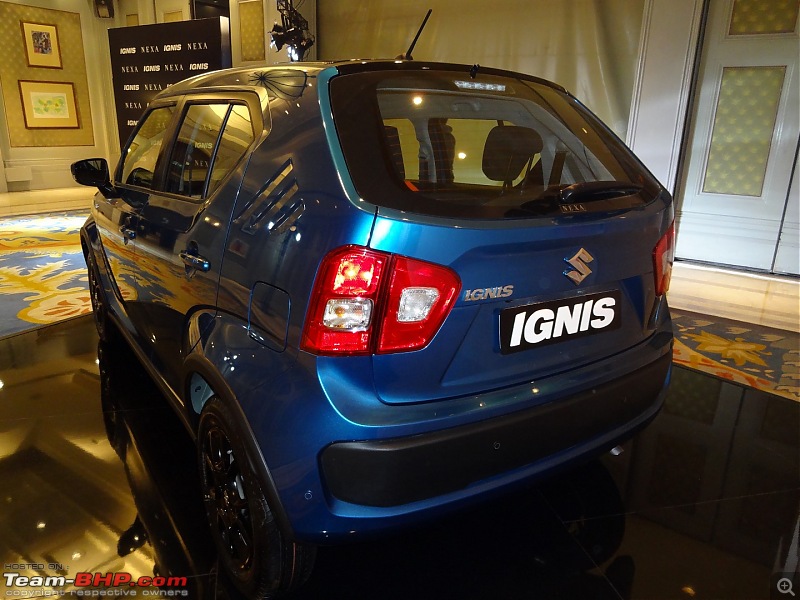
Plastic strip on the rear bumper will be useful in preventing scratches:
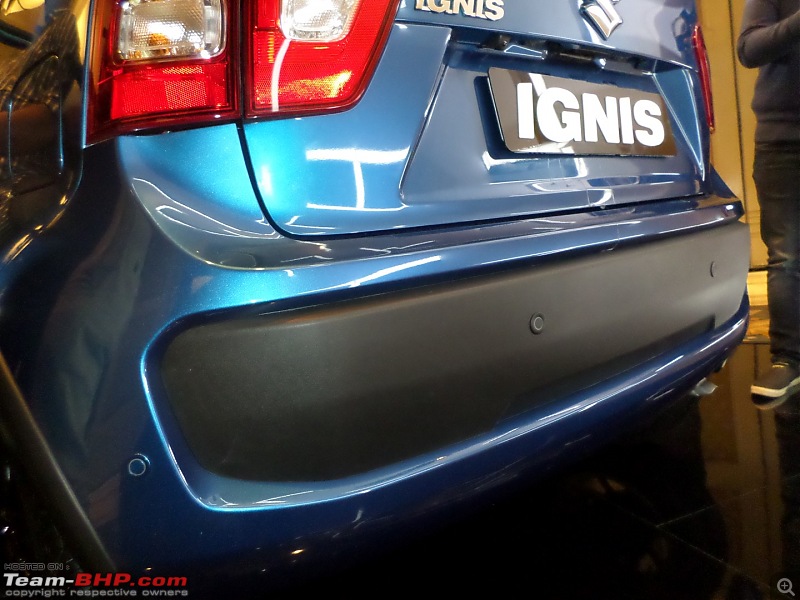
On the other hand, the rear view mirrors get a glossy black case, which will be prone to scratches:

No, the exhaust end can is not exposed like the Brezza's:
 Interiors:
Interiors: 
Interiors come in a highly contrasting black & ivory white dual-colour theme. Maruti clearly said it they wanted this to be unique and they've managed to do it - at least in the top variant that was displayed. However, the white interiors are likely to require much more cleaning and maintenance. Guess the millennials will have to keep 'em kids well behaved:

Corner air-con vents are circular and close completely if needed. The center ones are rectangular and don't close completely:
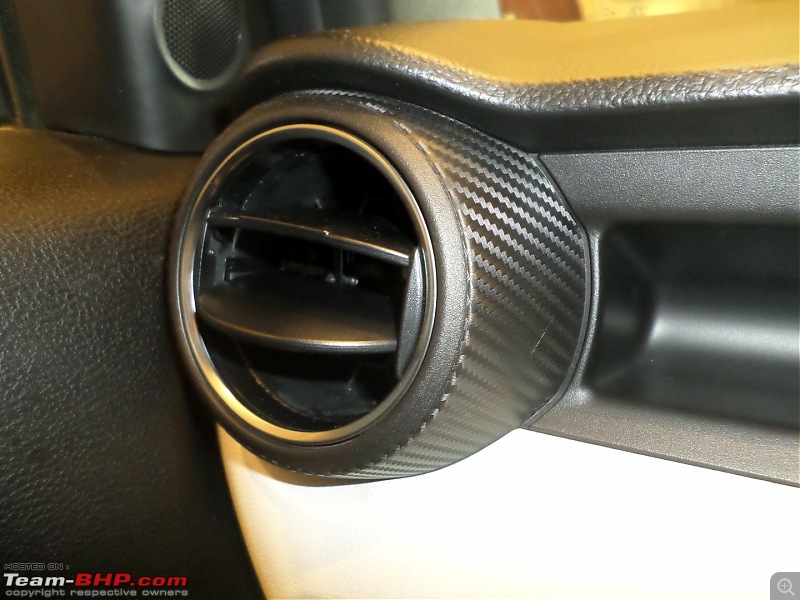
Quality of the plastic on the dash and switches is more than acceptable for the segment. Carbon fiber finish on the air-con vents and the hood of the instrument cluster is a nice touch:

Toggle type switches for the HVAC unit and the one-touch +- switches on either side for the temperature & blower controls look and feel quite rich, considering the car's segment:

The trip reset and info buttons for the MID are no longer the stick type units. The Ignis gets proper buttons:
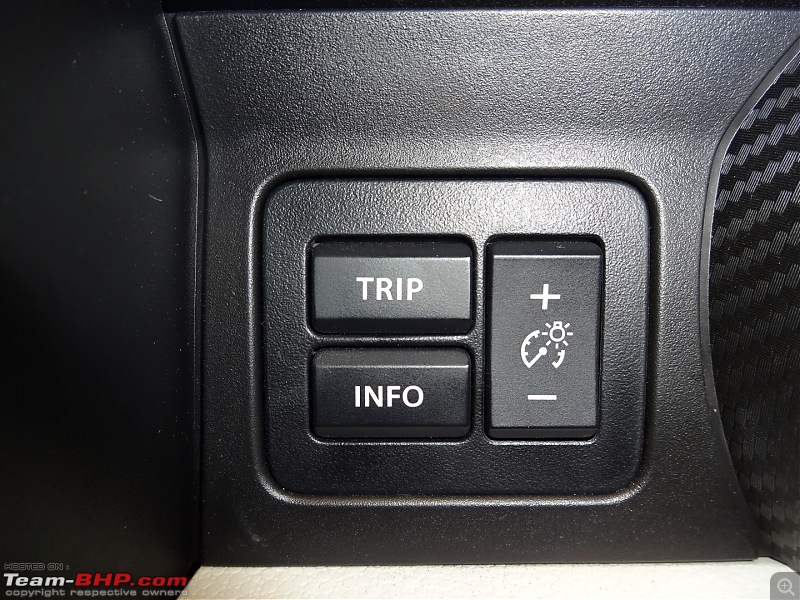
Engine start/stop button is conveniently placed to the right of the steering wheel:

Power window buttons are identical to other Maruti cars - no surprises here:
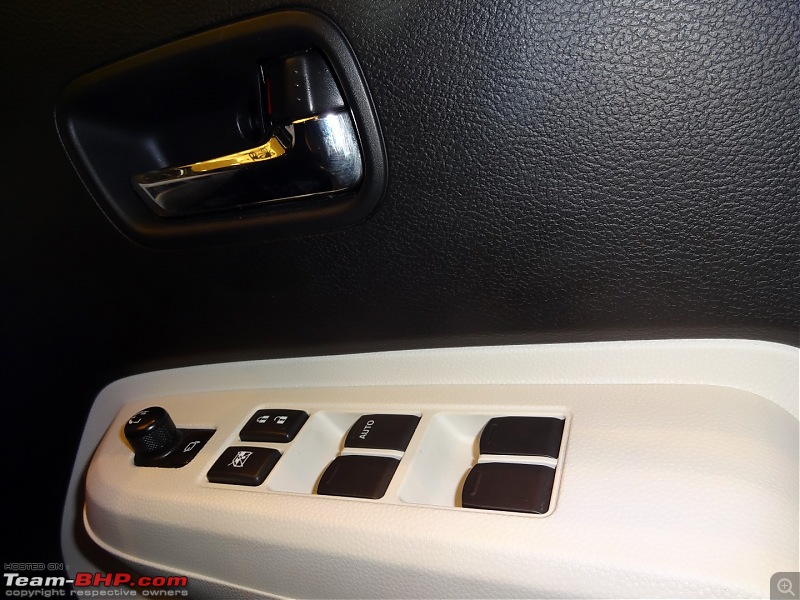
MID is basic with all the regular functions. Temperature gauge is absent as is the case with many cars these days:

Dash of colour on the inside that livens up the interiors. Part of the center console that houses the gear lever is body-coloured:

Front door panel looks good with enough white and a body-coloured handle with enough storage space:

In contrast, the rear door panel is a little too gray and gets only one small bottle holder:
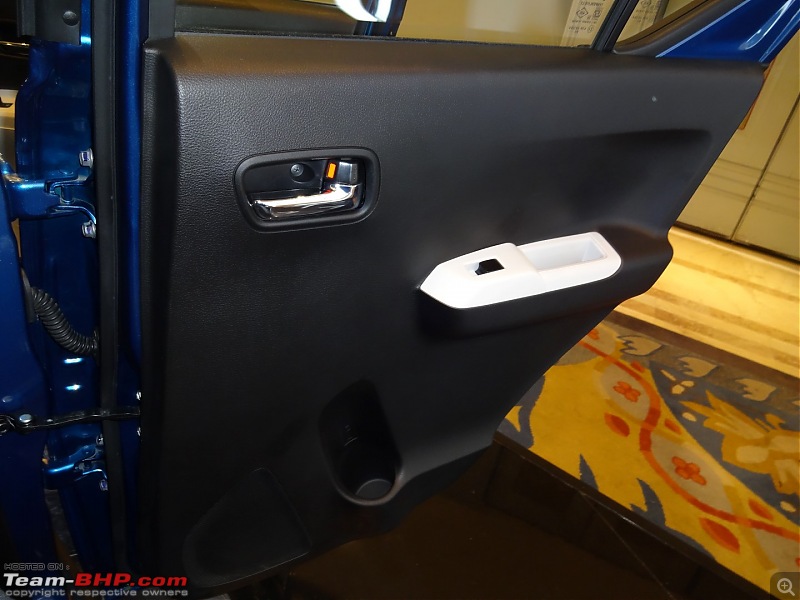
Tab-like infotainment system is not linear with the dashboard, but has been brought out and kind of bulges out. Maruti claims that it enhances the funkiness of the system and will appeal to their target audience. However, I will leave that for the viewers to decide. Personally, it looks a little disproportionate and asymmetric to me. The system supports Android Auto, Apple CarPlay & MirrorLink:

The fact that the front and the rear wheels are located the corners and the overhang are minimal, means that the legroom inside the car is very good. When I sat in my regular driving position (I'm 6' tall and sit upright while driving), a six-footer at the back had more than a couple of inches of space between his knees and the front seat.
However, the shoulder room is limited and the rather big floor hump at the rear, means that the back bench is comfortable for only two adults.
The headroom at the rear is plentiful, although egress will need the occupant to bend his head down because of the low roof height at the sides.
The seat upholstery is decent. While there is no seatback pocket behind the driver seat, the passenger seat has a small one.
Note the height of the headrests. They don't look too good, do they?
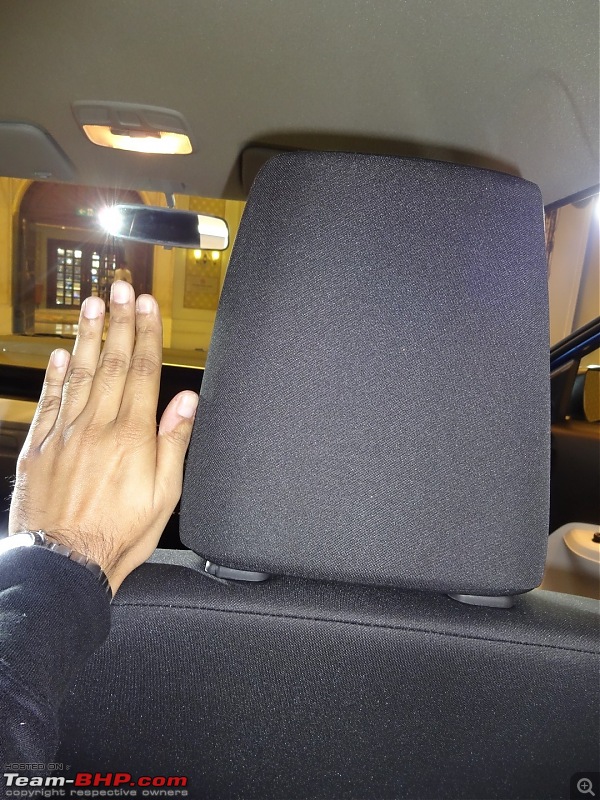
Seat belts are not height-adjustable:

60:40 split rear seats:

Seats fold down to offer more luggage space, albeit not a completely flat bed type setup:

A defining feature of the Ignis is a very good ground clearance of 180 mm, which will make a lot of Indians happy - bring on the speed-breakers!
Maruti clarified that neither the AWD, nor the 1.0L turbocharged petrol versions are being considered for India. The car may be exported to South-East Asian countries from India.
Overall, the car looks fresh and though the boxy design might put off a few, I am sure it will eventually be accepted by the masses. As always, the pricing will remain the key. IMO, they should price it just below the Swift to make this a VFM offering for the masses.
Let's wait for the Friday the 13th (of January) for the launch

.

 (4)
Thanks
(4)
Thanks

 (5)
Thanks
(5)
Thanks

 (2)
Thanks
(2)
Thanks

 (4)
Thanks
(4)
Thanks
 (5)
Thanks
(5)
Thanks

 (10)
Thanks
(10)
Thanks

 (43)
Thanks
(43)
Thanks
 (1)
Thanks
(1)
Thanks

 (1)
Thanks
(1)
Thanks

 (3)
Thanks
(3)
Thanks

 (6)
Thanks
(6)
Thanks
 (2)
Thanks
(2)
Thanks
 (1)
Thanks
(1)
Thanks








 I have friends who have had more than 1 too, in that age bracket. Give it a thought from the fairer sex's age perspective and it'll make much better sense.
I have friends who have had more than 1 too, in that age bracket. Give it a thought from the fairer sex's age perspective and it'll make much better sense.




























 .
.